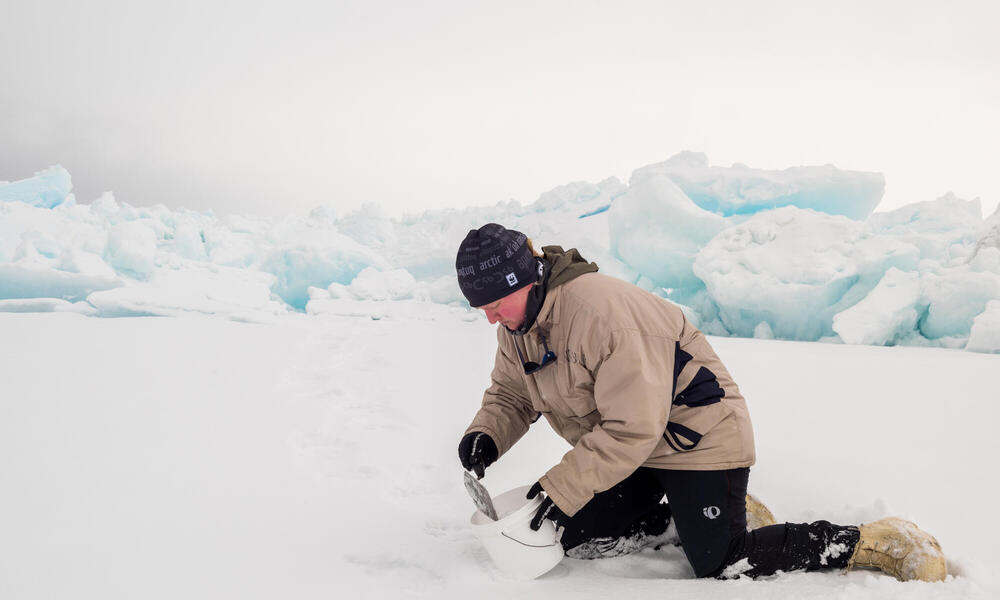Polar bears—iconic symbols of the Arctic and beyond—are as elusive as they are majestic. But understanding how they’re faring is of utmost importance to scientists. These apex predators serve as a bellwether for the health of many other species and the ecosystems of the region’s oceans. In other words, if polar bears are thriving, we can infer that other wildlife in their habitat is healthy, too.
Conventional methods for collecting DNA samples from these bears to learn more about their status are both inefficient and costly. Fortunately, we’ve developed an exciting new way to gather this critical information that only requires the footprints that polar bears leave behind in the snow.
In a landmark study published in Frontiers in Conservation Science, WWF, and collaborators have unveiled an innovative method for extracting DNA from the snow tracks of three elusive carnivores, including polar bears. The new technique involves retrieving trace amounts of environmental DNA—known as eDNA—shed from the footpads of these animals in the snow, enabling the identification of individual animals.
WWF’s work in the Arctic is focused on protecting and restoring the ecosystems that wildlife and the people of the region depend on.

